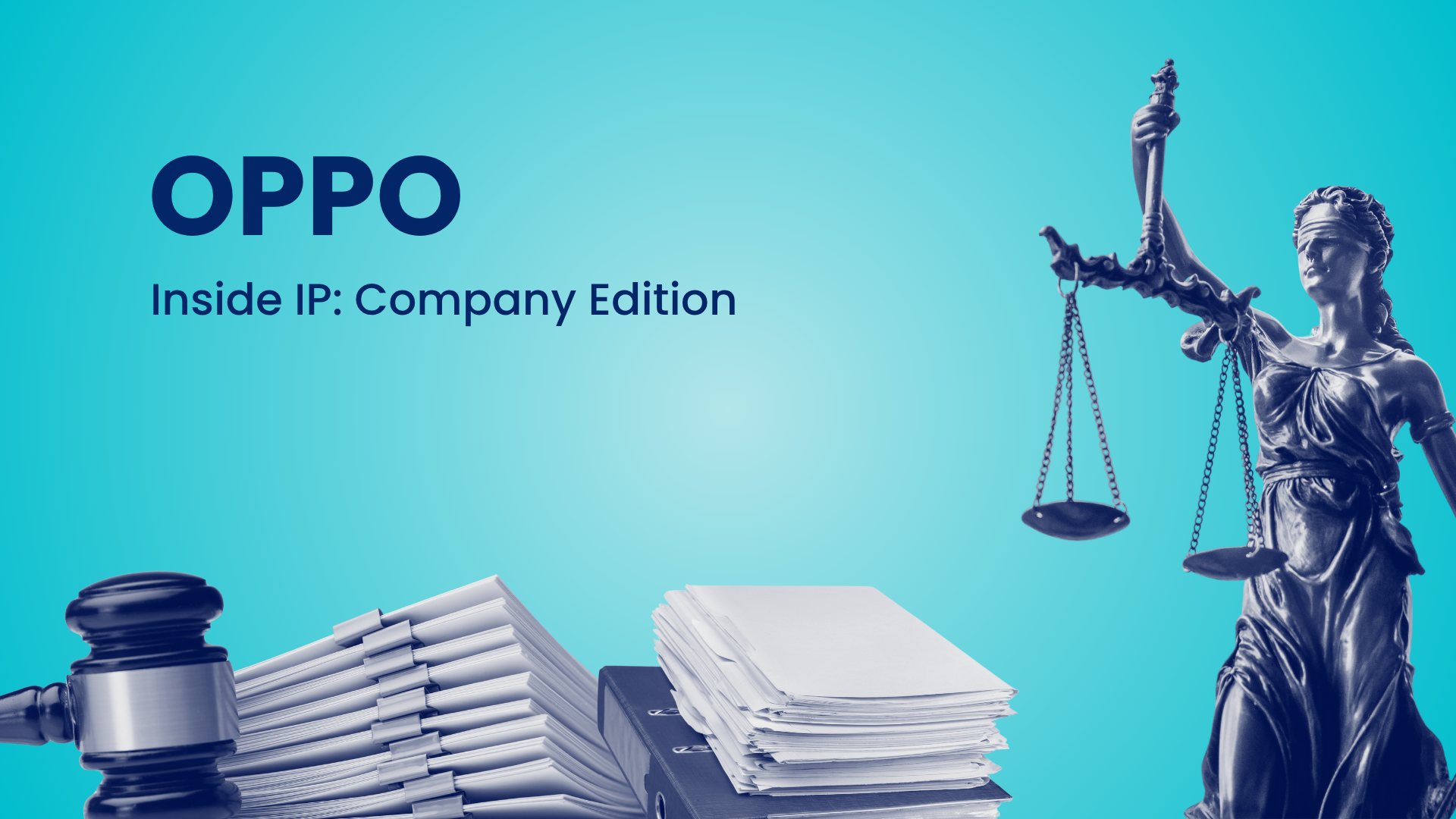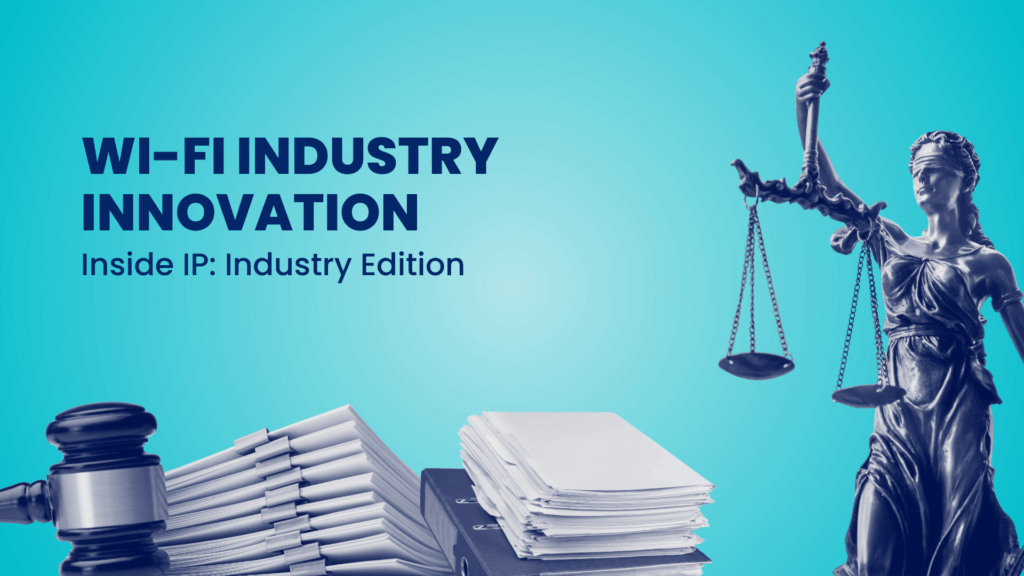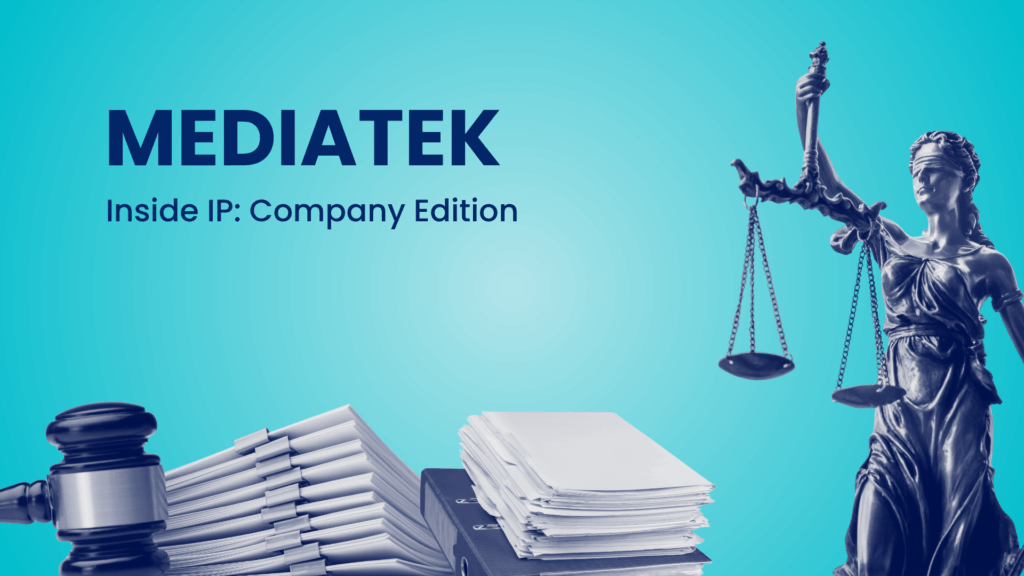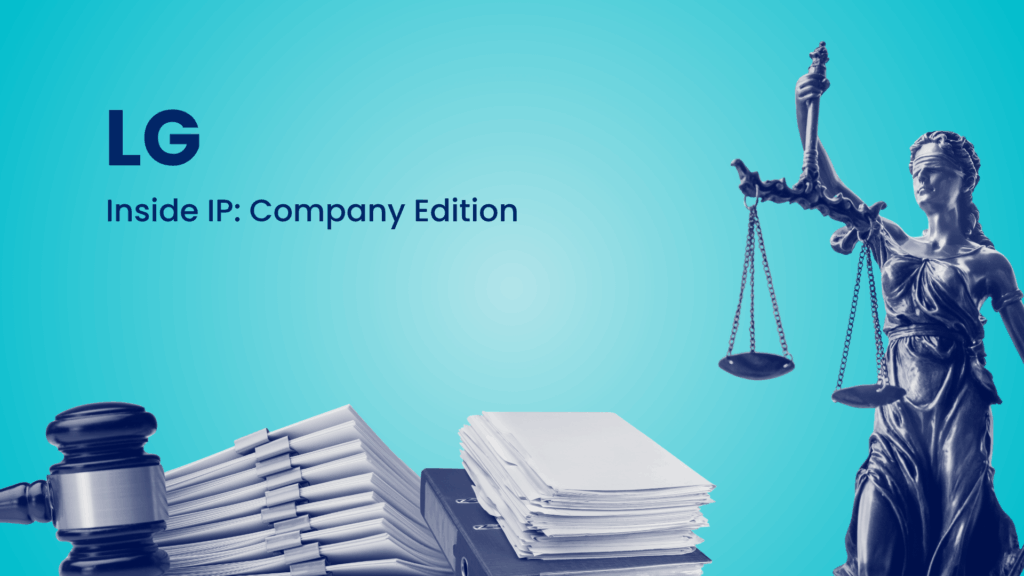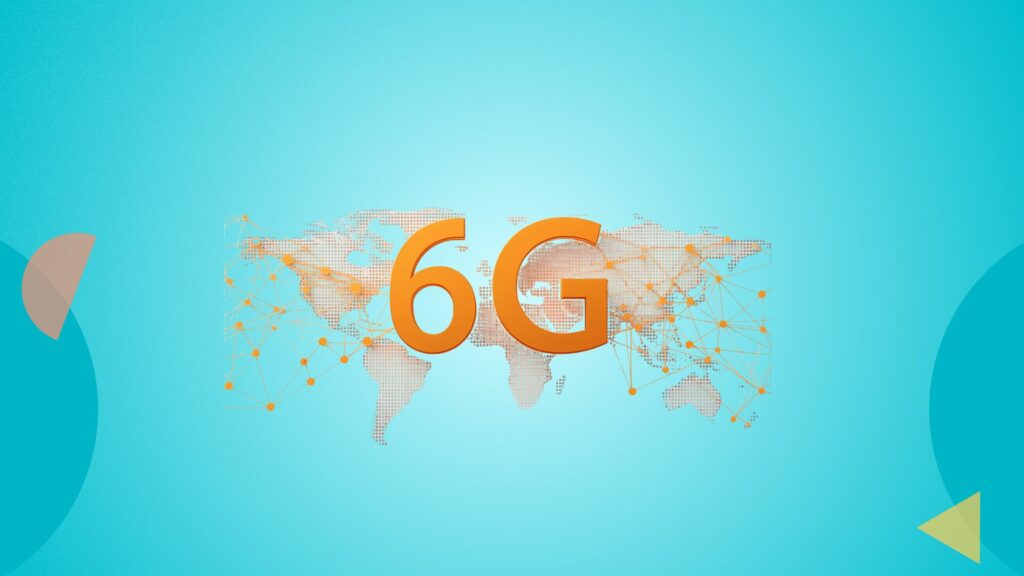In the dynamic world of consumer electronics and telecommunications, intellectual property stands as a critical pillar of market leadership and innovation. Oppo, a rapidly ascending force in this arena, has demonstrably leveraged a sophisticated IP strategy to cement its position, particularly within the competitive mobile and wireless sectors.
From pioneering smartphone innovations to making significant strides in next-generation wireless standards like Wi-Fi 7 and Wi-Fi 8, Oppo’s intellectual property portfolio offers a compelling narrative of strategic foresight and continuous development. This deep dive explores how Oppo’s IP activities not only reflect its R&D prowess but also influence the broader technological landscape.
Navigating the IP Landscape: Oppo’s Approach to Litigation
Oppo operates within a complex legal environment, strategically managing its litigation exposure. An analysis of the past decade reveals a clear trend of patent disputes involving the company.
For instance, in the five years between 2020 and 2024, the vast majority of cases against Oppo, specifically more than 90% of a total of nearly 50 cases, originated from Non-Practicing Entities (NPEs). A smaller fraction, only a couple of cases, involved operating companies such as Nucurrent Inc. and Jawbone Innovations LLC. This pattern is consistent with the preceding five-year span (2014-2019), where a similar high proportion of cases were initiated by NPEs, with just one instance involving an operating company, Koninklijke KPN NV. Notably, there has been no record of litigation from academic institutions against Oppo in the last decade. This concentrated focus from NPEs highlights a specific facet of the patent enforcement landscape that Oppo actively navigates.
In recent years, a significant number of lawsuits have been initiated. The vast majority of these were brought by Non-Practicing Entities (NPEs), while only a small fraction were filed by operating companies. Some of the notable operating companies involved during this time were Nucurrent Inc. and Jawbone Innovations LLC. In contrast, the preceding period saw only a handful of cases, with most of them being filed by NPEs and just a single case by an operating company, Koninklijke KPN NV.
Beyond this, as Oppo expands its presence in critical areas like 5G smartphones and IoT devices, it naturally encounters competitive pressures. The company’s engagement in patent discussions concerning 5G technologies, notably with entities like Qualcomm, underscores the robust and competitive nature of innovation in this sector. Such engagements are a testament to Oppo’s significant investment in 5G, indicating a proactive approach to managing its strategic position within this high-growth market.
Accelerating Innovation: Oppo’s Proactive Patent Filing Strategy
Oppo’s commitment to rapid innovation is clearly reflected in its patent filing strategy. Over the past three years, the company has secured a substantial number of U.S. patents, exceeding 1,800 grants. A significant portion of these, approximately 200 patents, were filed utilizing the Track One (Prioritized Examination) request program. This expedited process, while incurring additional costs, allows companies to accelerate the patent-granting timeline, thereby bringing their innovations to market more swiftly.
Oppo’s strategic deployment of Track One requests highlights specific technology areas where it seeks to gain a rapid competitive edge. These include:
- Wireless Communication and Network Technologies: Spanning advancements in 5G and beyond wireless systems, Vehicle-to-Everything (V2X) communication, and the expanding domain of IoT and Satellite Communications.
- Video and Image Processing Technologies: Focused on optimizing video compression and encoding, alongside cutting-edge image processing and prediction algorithms.
- General Network and Data Technologies: Encompassing innovations in network data management, resource optimization, and enhanced data transmission and security protocols.
This proactive approach in high-priority fields signals Oppo’s dedication to introducing novel and impactful solutions, prompting industry peers to closely monitor these areas for emerging trends and strategic developments.
Pioneering Wireless Connectivity: Oppo’s Influence in Wi-Fi Standards
Oppo has emerged as a formidable force in the evolution of wireless connectivity, significantly contributing to the advancement of Wi-Fi standards. This commitment is evident in its escalating involvement, from an initial presence in Wi-Fi 6 to a marked increase in its contributions to Wi-Fi 7 and its proactive engagement in Wi-Fi 8 development.
The company’s share of Wi-Fi patents has seen a remarkable surge, growing from a nominal percentage in Wi-Fi 6 to over 3% in Wi-Fi 7, illustrating its heightened focus on this critical technology. Oppo’s contributions to the Wi-Fi 7 standard alone total more than 70, with significant advancements in areas such as EHT Signaling and Format, Multi-link operation, and Multi-AP Coordination. These efforts are underpinned by a substantial patent portfolio, including more than 30 patent families related to EHT Signaling, nearly 30 in Multi-link operations, and over 15 in Multi-AP coordination. This extensive IP, coupled with its standard contributions, positions Oppo as a key licensing option for companies entering the Wi-Fi 7 market.
Looking ahead, Oppo is already actively shaping the future of wireless connectivity by contributing to the development of the Wi-Fi 8 standard. As of mid-2024, the company had made multiple contributions to the IEEE 802.11bn Task Group, addressing critical areas like:
- Time-domain A-PPDU for Collision Reduction and Priority Access
- Coordinated R-TWT for Multi-AP Scenarios – Follow-up
- AP Power Saving
This early engagement highlights Oppo’s long-term vision and its ambition to influence the next generation of wireless technologies. While Oppo holds a substantial portfolio of Wi-Fi patents and is a significant player in Wi-Fi communication R&D, its historical approach to these patents has largely focused on internal development. For example, over the past five to eight years, Oppo has primarily utilized its Wi-Fi 6+ patents for internal innovation rather than extensive licensing, litigation, or sales, indicating a strategic emphasis on fostering a robust ecosystem and integrating these technologies into its product offerings.
Driving Foundational Innovation: Key Patents and Their Impact
Oppo’s patent portfolio is replete with foundational innovations that have significantly influenced the broader technology landscape. Several of its patents have demonstrated high licensing potential by being successfully asserted to distinguish the company’s prior art against competitor filings. These patents, often cited as references against applications from major industry players like Samsung, Qualcomm, Huawei, and Apple, underscore the strength and strategic value of Oppo’s intellectual property.
Here are five such patents, along with the number of competitor applications they were used to distinguish against, from January to December 2023:
- US10181745B2
- US11212725B2
- US10274996B2
- US10444802B2
- US10375603B2
These patents are critical assets, demonstrating Oppo’s leadership in areas like cloud computing and mobile technology.
Furthermore, an analysis of forward citation data reveals the profound influence of Oppo’s most impactful patents. Forward citations are a key indicator of a patent’s foundational nature and its role in shaping subsequent innovations across its field. Oppo’s top three most cited patents highlight its significant contributions to mobile technology and communication systems:
The patents have total citations ranging from 180 to 220. Specifically, patent US8576784B2 focuses on Signal Processing for Mobile Device, patent US9398480B2 centers on Mobile Communication Systems, and patent US8014264B2 relates to Communication Networks.
These patents underscore Oppo’s role as a fundamental innovator, with its work forming the basis for numerous subsequent developments in its core technological domains.
Shaping the Future: Oppo’s Strategic Influence on the IP Ecosystem
Oppo’s robust IP portfolio actively shapes the competitive landscape by influencing the patenting efforts of other major players. Examiners have frequently cited Oppo’s patents to distinguish new applications from competitors, demonstrating the foundational nature of Oppo’s innovations. This includes companies like Samsung Electronics, Qualcomm, Huawei Technologies, Beijing Xiaomi Mobile, and Apple Inc., all of whom have filed patent applications covering similar technological concepts. The sheer volume of these distinctions – with Samsung applications cited over 25 times and Qualcomm applications cited over 20 times – highlights Oppo’s significant impact.
Moreover, Oppo’s patent strength has directly contributed to the refinement and, in some instances, the abandonment of patent applications from competitors. Notably, several applications from Huawei Technologies and Apple Inc. were abandoned due to prior art distinctions made by examiners citing Oppo’s patents, along with instances from Beijing Xiaomi Mobile, Ericsson, and ZTE Corp. This outcome underscores the strategic advantage and foundational strength of Oppo’s intellectual property.
Oppo’s strategic focus areas, as reflected in its patent filings over the last decade, primarily revolve around enhancing the mobile user experience and optimizing communication efficiency. Its key technological priorities include:
- Energy-saving technologies are designed to optimize power consumption in communication devices.
- Development of mobile device interfaces for enhanced user interaction and experience.
- Advanced methods for managing touch-based functionalities within mobile devices.
- Techniques to improve smartphone communication capabilities and efficiency.
- User interface innovations for enriching user interaction with communication devices.
These focus areas underscore Oppo’s dedication to pushing the boundaries of mobile and energy-efficient communication technologies.
Optimizing IP Operations: Prosecution Strategies and Global Talent
Oppo’s extensive and rapidly expanding patent portfolio requires sophisticated management and a nuanced prosecution strategy. In the last five years, Oppo has faced a significant volume of internal cross-referencing during patent prosecution, with over 1,000 instances where its own prior patents were cited against new applications. This often necessitates claim amendments to progress new applications, reflecting the profound depth and density of Oppo’s ongoing innovation. While this demonstrates a robust and active R&D pipeline that continually builds upon its existing body of work, it also highlights the need for continuous optimization in portfolio management to ensure a streamlined flow of innovation to market.
Oppo’s global IP strategy is further supported by a network of highly experienced legal professionals. Top-tier attorneys and law firms play a pivotal role in shaping its patent portfolio. For instance, XIONG, Yong-qiang and HAO, Chuan-xin have been instrumental in filing thousands of patents for Oppo over the past decade. Furthermore, specialized firms like Manitz Finsterwald (for European patents), CHINA PAT INTELLECTUAL PROPERTY OFFICE (for WO applications), and Shenzhen Essen Zhicheng Intellectual Property Office (for Chinese patents) contribute to Oppo’s global patenting efforts across key jurisdictions like Europe (EP), China (CN), and WIPO (WO). This global network of expertise underscores Oppo’s comprehensive approach to intellectual property protection.
Moreover, Oppo demonstrates a sophisticated understanding of the patent examination landscape. In Art Unit 2859, where Oppo has secured a significant number of U.S. patent grants in recent years, the overall grant rate stands at an encouraging 78%. However, closer analysis reveals variations among examiners. For example, Examiner Diao shows an impressive grant rate of 90%, while Examiner Isla’s rate is around 30%. Such detailed insights can inform and refine Oppo’s prosecution approach, enabling strategic adaptation to maximize the success of patent grants and optimize resource allocation.
Oppo’s innovation engine draws significantly from a global talent pool. While its home country, China, remains a primary source of inventive output, the company also actively leverages expertise from the United States, Australia, Japan, and Canada. This global engagement highlights Oppo’s commitment to sourcing diverse perspectives and specialized knowledge to fuel its technological advancements. The mobility of key innovators, such as Huang Lei, who moved from Oppo to Huawei Singapore Research Center after significant contributions to Wi-Fi 7 patents, underscores the dynamic nature of talent within the high-tech industry. This ongoing exchange of expertise across leading companies not only stimulates broader industry innovation but also continually presents new avenues for talent attraction and strategic collaboration within the competitive R&D landscape.
A Vision for Connectivity and Beyond
Oppo’s journey in the competitive landscape of mobile and wireless technology is a testament to its strategic investment in intellectual property. By proactively managing its patent portfolio, contributing significantly to emerging standards like Wi-Fi 7 and Wi-Fi 8, and leveraging a global network of talent and legal expertise, Oppo is not merely participating in the tech industry—it is actively shaping its future. Its foundational patents, influential in distinguishing competitor innovations, and its strategic patenting efforts in high-growth areas, firmly establish Oppo as a pivotal player poised for continued impact in the global technology arena.
Subscribe to our Inside IP newsletter for insights into patent filings, litigation shifts, licensing opportunities, and strategy breakdowns across tech and innovation-driven sectors.
Track your Competitors’ IP Strategy
Subscribe for Updates

